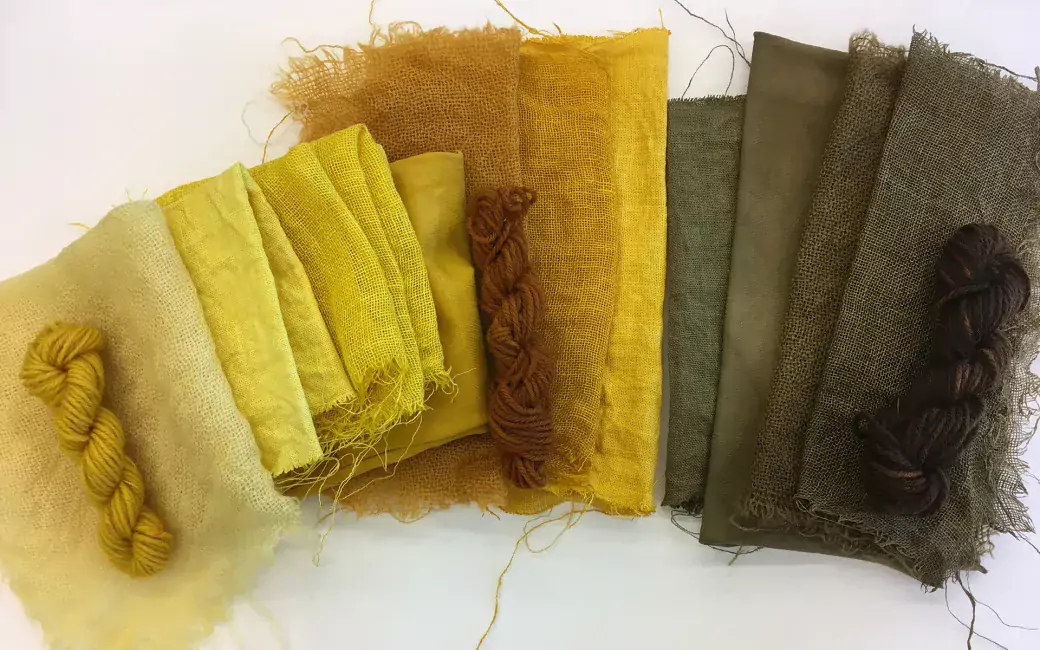The Faculty of Educational Sciences has received a significant EU consortium grant under the Horizon Europe framework programme for Colour4CRAFTS, a multidisciplinary project that combines the cultural tradition of dyes and textile dyeing with the development of novel dyeing techniques and bio-based dyes.

Professor of Craft Science and Craft Pedagogy Riikka Räisänen heads Colour4CRAFTS, the first consortium project coordinated at the City Centre Campus in nearly 10 years.
Also involved in the project are the Faculty of Science as well as several international operators and partner universities.
The University of Helsinki's share of the €4 million project funding is €1,675,090, which is divided between two faculties: the share of the Faculty of Educational Sciences is €1,160,090 and the share of the Faculty of Science €515,000.
A project combining cultural tradition and state-of-the-art technology
In the Colour for Combining Re-engineering, Applying, Futuring, Transforming, Stretching! (Colour4CRAFTS) project, research groups from a range of fields as well as research and development businesses are joining forces to produce new information on the use of dyes and pigments in historical times as well as new high-tech applications for bio-based dyes.
"Colours, created by colours and colourants, are a central part of human history," Riikka Räisänen notes.
Today's consumers rarely give any thought to the origin of the colours in the products. Colours are taken for granted. And yet, we know that the production of dyes and pigments as well as dyeing are associated with considerable environmental problems.
"In this multidisciplinary project, history is our starting point. We want to see what we can learn from the past, while at the same time we aim to innovate new, increasingly green ways of producing dyes and using them in ways that do not pollute and consume resources as little as possible," Räisänen says.
"The best thing about such multidisciplinary research is precisely the collision of knowledge and thinking. The language of science is specific, and every time difficult to understand for those who present the other fields of science, and this 'disunderstanding' can in fact give rise to new perspectives."
The methods of futures research are an integral part of the project
"While we researchers have the knowhow to solve problems here and now, we also aim to create the future. I very much like the idea of futures researchers on the reciprocal nature of the future: we are creating our future, and how we image the future affects on how we act. We shape the future, and our images of the future shape us."
According to Räisänen, it is important to dream and, at the same time, stretch our notion of the world, which is why the words 'Futuring' and 'Stretching' were also included in the project title.
"I particularly like those words - this multidisciplinary project is aiming at stretching both values and technical solutions in the context of colour. What could be possible, what kind of colour futures do we want?"
Riikka Räisänen started working as Professor of Craft Science and Craft Pedagogy in January 2023. The funding is inspiring for a researcher who has long been interested in dyeing techniques and consumption.
Räisänen has also led the BioColour project, funded for a six-year term by the Strategic Research Council (at the Academy of Finland), which she believes has already had an impact on the inclusion of bio-based dyes and pigments in the offerings of Finnish textile companies. Through previous projects, she has established extensive international networks with both researchers and business life.
"In addition to conducting serious top-level research, the Colour4CRAFTS project is fun, as it also includes elements of play and imagination. Research must be fun, and you can reach new spheres when you have the courage to throw yourself into being together freely with people from a range of backgrounds," Räisänen enthuses.
Räisänen has a background in the natural sciences, craft science and education.
Part of funding allocated to the Faculty of Science
Part of the funding for the Colour4CRAFTS project goes to the natural sciences, to research in chemistry conducted by University Lecturer Petri Heinonen.
Chemistry is an important part of modern research in history and archaeology, with analytical techniques making it possible to determine the origin of dyes and pigments.
"However, the low concentration of dyes and the dissociation reactions that have taken place over time in compounds pose a challenge," Heinonen says.
"Besides accurate analysis techniques, we need comparisons with compounds isolated from nature, which may have been used in different eras and geographical locations."
However, chemistry is not limited to supporting historical and archaeological research.
"Our particular focus is on modifying the structures of colour compounds used in history and extracted from plant sources and, consequently, their properties by means of synthetic chemistry. In this too, we are exploring the unknown and finding out what chemistry, synthetic chemistry in particular, has to offer in a multidisciplinary environment."
Interdisciplinary collaboration pays off
The project is a fine demonstration of what interdisciplinarity, at its best, enables - funding in the millions.
"In fact, we often advise researchers who are planning their funding to keep in mind parties active in other fields of science, both within the University of Helsinki and elsewhere," says Research Funding Advisor Sanna Villikka.






